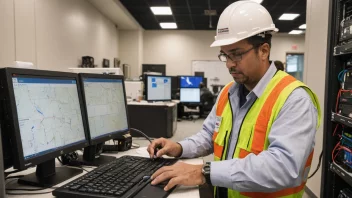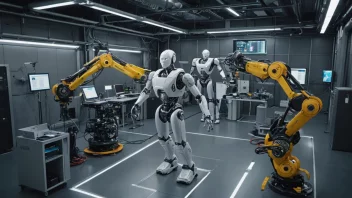Introduction
In today's rapidly evolving world, technological innovation plays a pivotal role in shaping social change. This article will guide you through the various ways technology influences societal norms, behaviors, and structures. By understanding these mechanisms, you can better appreciate how advancements in technology drive shifts in social dynamics.
Step 1: Recognizing the Link Between Technology and Society
To begin, it is essential to acknowledge that technology and society are interdependent. Technological advancements often emerge from societal needs, and in turn, they can alter the fabric of society. Here are a few points to consider:
- Historical Context: Review past technological innovations, such as the printing press or the internet, and their social implications.
- Current Trends: Analyze contemporary technologies like artificial intelligence and their potential impact on employment and privacy.
Step 2: Understanding the Mechanisms of Change
Technological innovation drives social change through various mechanisms:
- Communication: The rise of social media has transformed how individuals interact, mobilize, and express opinions.
- Accessibility: Technology can democratize access to information and services, leading to greater social equity.
- Automation: Innovations in automation can displace traditional jobs, prompting shifts in workforce dynamics.
Step 3: Case Studies of Technological Impact
Examining real-world examples can provide insight into how technology drives social change:
Case Study 1: The Internet and Social Movements
The Arab Spring exemplifies how social media platforms facilitated communication and organization among activists, leading to significant political changes.
Case Study 2: Telemedicine in Healthcare
Telemedicine has revolutionized healthcare access, particularly in rural areas, by allowing patients to consult with doctors remotely, thereby improving health outcomes.
Step 4: Embracing Change and Innovation
As technology continues to evolve, individuals and organizations must adapt to these changes. Here are some strategies to embrace technological innovation:
- Education: Stay informed about emerging technologies and their implications.
- Collaboration: Work with others to harness technology for social good.
- Advocacy: Promote policies that ensure equitable access to technology.
Step 5: Reflecting on Ethical Considerations
Finally, as we navigate the intersection of technology and social change, it is crucial to consider the ethical implications:
- Privacy: Understand the importance of data protection in an increasingly digital world.
- Equity: Address the digital divide to ensure all individuals benefit from technological advancements.
Conclusion
In summary, technological innovation is a powerful driver of social change, influencing communication, accessibility, and workforce dynamics. By recognizing the link between technology and society, understanding the mechanisms of change, exploring case studies, embracing innovation, and reflecting on ethical considerations, we can better navigate the complexities of our modern world. Stay informed, engaged, and proactive to foster positive social change in the face of ongoing technological advancements.






